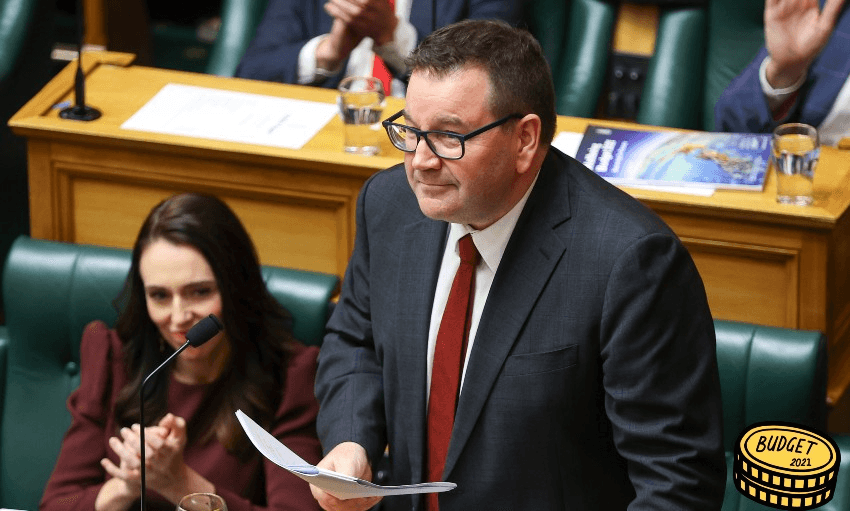Lifting benefits so soon after the economic hit from Covid-19 shows the government has not been spooked into a return to austerity. But neither has it grasped an opportunity to do more, writes economist Rosie Collins.
The highlights of today’s budget were the significant boosts to benefits and the strong focus on Māori development. The increases to benefits are unprecedented and will materially help those struggling week to week. It’s a direct approach to boost incomes that is less messy than coming up with fragmented policies to mask poverty.
Grant Robertson tried to be both generous and miserly at the same time, a tricky – if not impossible – task. There is so much need, and yet the spectre of “irresponsible’” fiscal management hangs over the Labour government. Debt is cheap – an economist might have done more, but a politician perhaps not.
I was looking for more investment in climate-resilient infrastructure, boosts to social housing, and targeted support for those out of jobs to get back into work. This budget has bits and pieces in these areas, but no big punch.
The investment of $380m over four years for Māori housing is an example of that. Māori make up 17% of our population, but half of our social housing waitlist. While 1,000 houses for Māori will go some way to fixing this, there are 11,000 Māori families on the waitlist. It’s still grossly inadequate.
Still, resources to make projects like papakāinga development easier will be encouraging for many who have been tirelessly advocating for this. Māori have land, but other barriers have long made housing an unacceptably awful situation for too many.
The budget plays at the fringes of government spending, but the signals of additional spending are important for stimulating the economy. This budget contains $3.8bn of average new operational spend, and $3.9bn for capital investment this year, over and above the $108bn of usual spending each year (on programmes that already exist, like health, education and justice).
Together it provides some stimulus. This is good, because the Reserve Bank can’t do much else for the real economy at the moment, just inflate house prices. Taking interest rates from “low” to “lower” can only do so much to spark productive investment when things are this uncertain.
We could have seen more on public infrastructure to help lock in longer-term stimulus. $11.5bn per year over five years is a stand-still figure (last year we spent $11.7bn). We needed to see that up by at least 50% to be confident we can climb out of our $75bn infrastructure gap.
While $300m for Green Investment Finance sounds good, it’s a small number in the scheme of things.
The advantage of infrastructure spending is that it’s spread out over many years, it creates jobs and economic activity, and it boosts the productive capacity of the economy. To get climate change ready and to relieve pressure on the Reserve Bank to do the heavy work, we needed to see more here. Debt is cheap – why not take the opportunity to set up for a better future?
One big positive today was the return of the training incentive allowance and some early hype for a social unemployment insurance scheme. These are both good if they help people find better job matches and reduce wage scarring – one major cost of becoming unemployed is that your income will often not recover for several years after you re-enter the workforce.
If the average cost of a jobseeker benefit is $12,000 average per person per year (and the lifetime cost is around $140,000), targeted spending to reduce this toll is a good thing. Part of this is preventing people from falling into poverty if they’re in between work, and supporting them to upskill if they can.
Active labour market policies haven’t been a strong suit of ours by OECD standards, so it’s great the government is doing more here. The OECD has been recommending this sort of policy action for New Zealand for some years now. I’m glad to see it.
The economic outlook is much improved from the height of Covid-19 only a year ago. Lifting benefits so soon after the economic hit from Covid-19 shows the government has not been spooked by boffins into a return to austerity.
But neither has the government grasped an opportunity to do more. Need is high and funding costs are low. There was a favouring of operating expenditure in this budget, at the expense of longer-term investment. I’m happy overall, but wanted more. Infrastructure is a can that can’t keep being kicked down the road.



